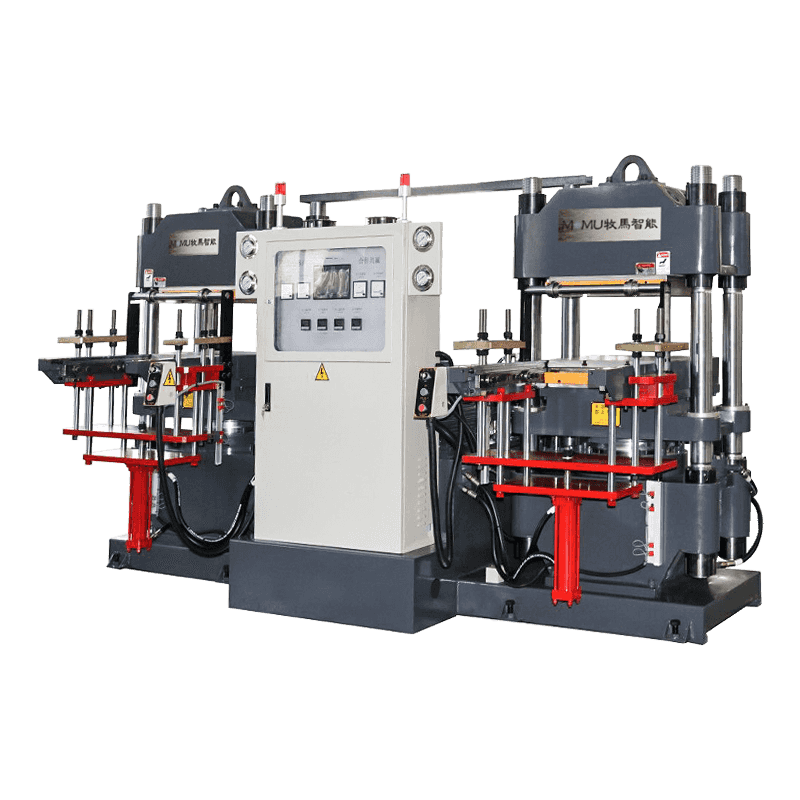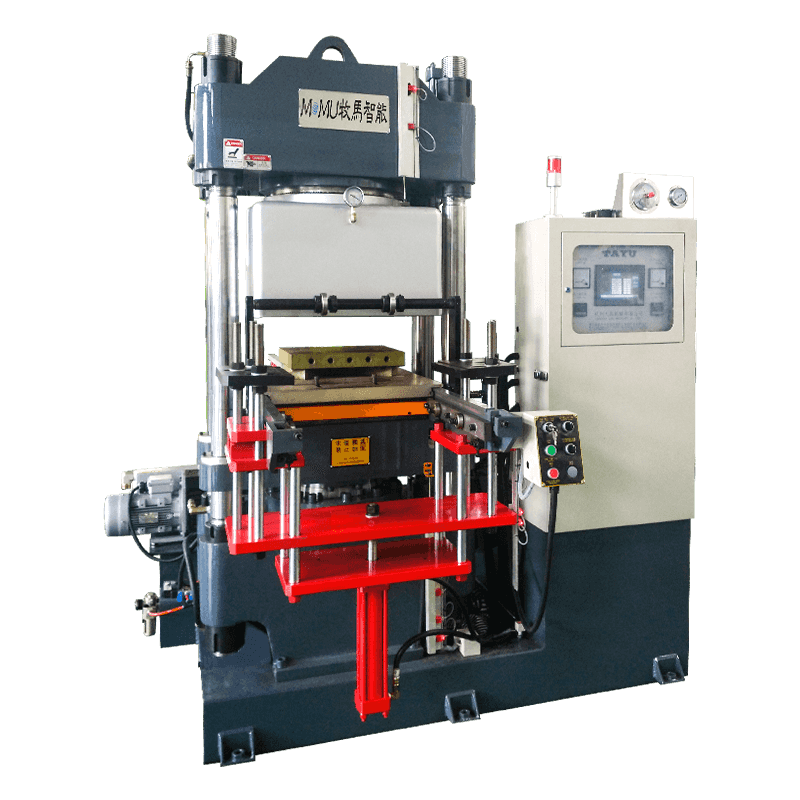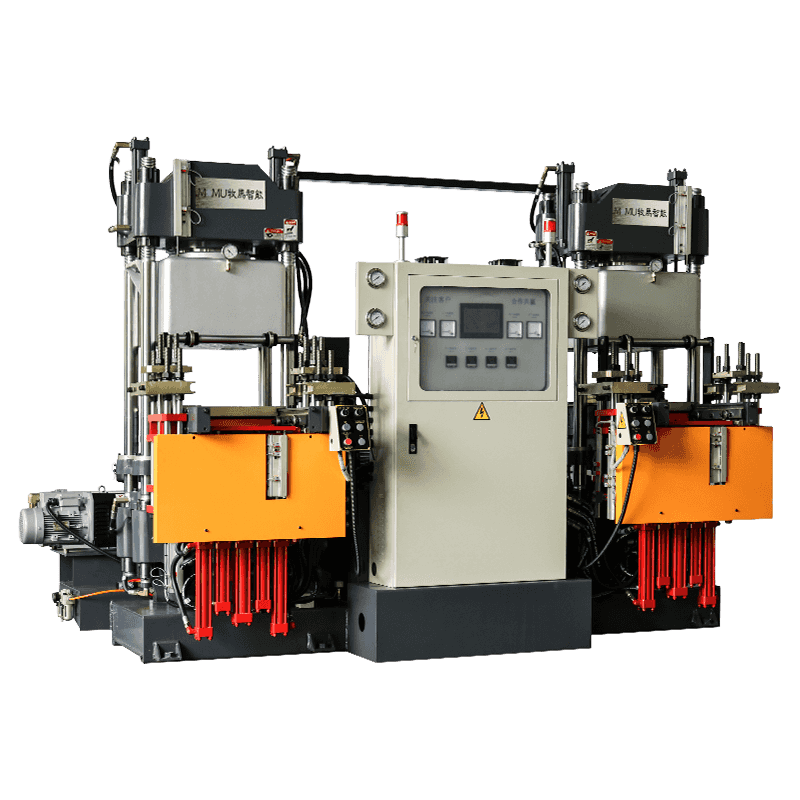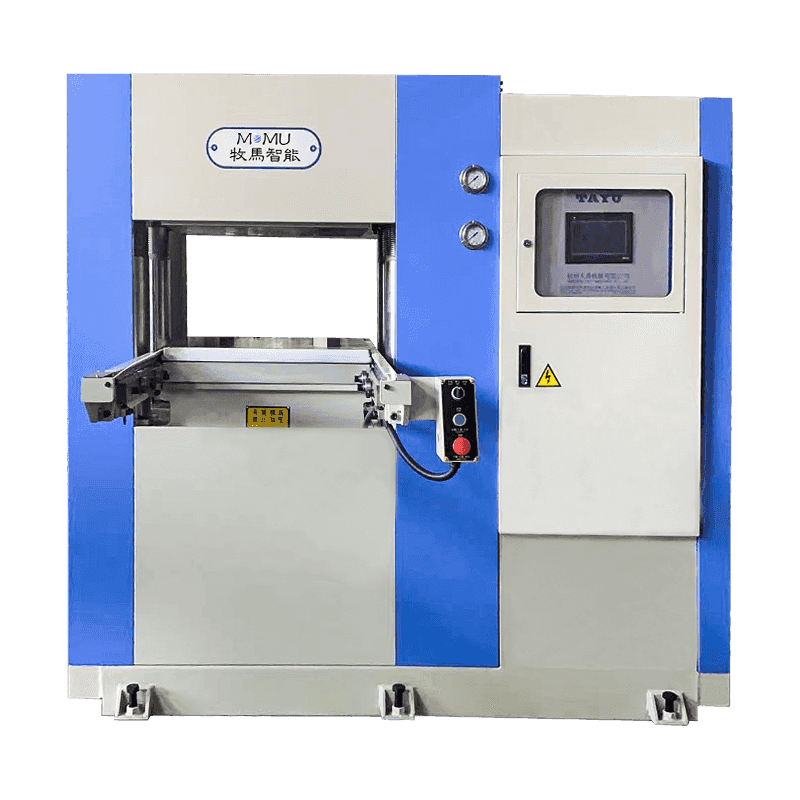The maintenance requirements for a vacuum compression molding machine are essential to ensure its optimal performance, longevity, and safety. Here are some key maintenance tasks typically associated with vacuum compression molding machines:
Regular Cleaning:
Keep the machine and its components clean by removing dust, debris, and residue from surfaces, molds, and tooling.
Use appropriate cleaning agents and solvents recommended by the manufacturer to prevent damage to machine parts and materials.
Lubrication:
Lubricate moving parts, such as guide rails, bearings, screws, and hydraulic components, according to the manufacturer's recommendations.
Use lubricants suitable for the specific components and operating conditions to minimize friction, wear, and corrosion.
Inspection and Alignment:
Regularly inspect machine components, including platens, heating elements, molds, and tooling, for signs of wear, damage, or misalignment.
Check alignment of platens, molds, and tooling to ensure proper positioning and operation during molding cycles.
Heating System Maintenance:
Inspect and clean heating elements, thermocouples, and temperature sensors to ensure accurate temperature control and uniform heating of molds.
Check for signs of wear or damage to insulation materials, wiring, and connections in the heating system.

Vacuum System Maintenance:
Inspect vacuum pumps, valves, hoses, and seals for leaks, blockages, or damage.
Clean or replace filters, screens, and other components to maintain optimal vacuum pressure and efficiency.
Hydraulic System Maintenance:
Monitor hydraulic fluid levels and condition regularly and top up or replace fluids as needed.
Check hydraulic hoses, fittings, and seals for leaks, wear, or damage, and replace as necessary.
Follow manufacturer's guidelines for hydraulic system maintenance, including filter replacement and system flushing.
Electrical System Maintenance:
Inspect electrical components, such as switches, relays, connectors, and wiring, for signs of damage, corrosion, or overheating.
Tighten loose connections and replace worn or damaged components to prevent electrical faults or malfunctions.
Safety System Inspection:
Test safety features and interlocks, such as emergency stops, guards, light curtains, and safety switches, to ensure they function correctly.
Replace defective or worn safety components promptly to maintain a safe working environment for operators and personnel.
Training and Operator Maintenance:
Provide training to machine operators and maintenance personnel on proper operation, maintenance, and safety procedures.
Encourage operators to perform routine maintenance tasks, such as cleaning, lubrication, and inspection, as part of daily or weekly machine checks.
Documentation and Record-Keeping:
Maintain accurate records of maintenance activities, including inspections, repairs, and replacements, to track machine performance and compliance with maintenance schedules.
Keep service manuals, spare parts lists, and technical documentation readily accessible for reference and troubleshooting purposes.
By implementing a proactive maintenance program and adhering to manufacturer's guidelines and recommendations, you can ensure the reliability, efficiency, and safety of your vacuum compression molding machine, minimizing downtime and maximizing productivity.





